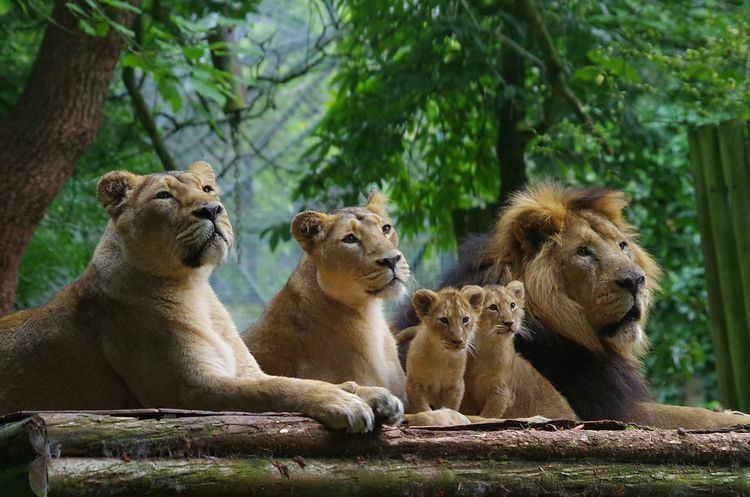Date opened 1923 No. of animals Over 2000 Opened 1923 Phone +44 1803 697500 | Land area 80 acres (32 ha) No. of species Over 250 Area 32 ha | |
 | ||
Location Paignton, Devon, England Major exhibits Monkey Heights, Reptile Tropics, Crocodile Swamp Address Totnes Rd, Paignton TQ4 7EU, UK Hours Closed now Monday10AM–4:30PMTuesday10AM–4:30PMWednesday10AM–4:30PMThursday10AM–4:30PMFriday10AM–4:30PMSaturday10AM–4:30PMSunday10AM–4:30PMSuggest an edit Similar Living Coasts, Newquay Zoo, Splashdown Quaywest Waterpark, Dartmoor Zoological Park, Dartmouth Steam Railway Profiles | ||
Paignton zoo s vertical farm
Paignton Zoo Environmental Park, is a zoo in Paignton, Devon, England. The zoo is part of South West Environmental Parks Ltd which is owned by the Whitley Wildlife Conservation Trust (WWCT). It is a combined zoo and botanic garden that welcomes over half a million visitors a year. WWCT also runs Living Coasts in Torquay and Newquay Zoo in Cornwall. All three are registered charities.
Contents
- Paignton zoo s vertical farm
- Paignton zoo tv advert
- Animals
- Desert House
- Tropical Forest House
- Forest Animals
- Wetland Birds
- Savannah Animals
- Plants
- History
- Conservation
- Education and research
- Projects
- Awards
- References
Paignton Zoo has a collection of about 2,000 animals representing nearly 300 species. It also cultivates about 1,600 different species of plant. It currently employs over 100 permanent staff and an additional 120 seasonally. A registered educational and scientific charity, Paignton Zoo is committed to the highest standards of animal husbandry and welfare, to scientific research, education and the breeding and conservation of rare and endangered animal and plant species.
Paignton zoo tv advert
Animals
Paignton Zoo's collection of animals are categorised by the habitat they live in, and those habitats are represented by themed buildings and areas across the zoo.
Desert House
The Desert House is a walk-through glasshouse containing authentic desert plants such as cacti of various species. The animals kept in the Desert House include red-billed quelea, gila monsters, superb starlings, pancake tortoises, Guinea pigs and free-flying Princess of Wales parakeets, as well as a real termite mound.
Tropical Forest House
The Tropical Forest House displays reptiles and amphibians from tropical rain forests. These include Burmese pythons, Cuban crocodiles, saltwater crocodiles, boa constrictors, matamata turtles, dwarf caimans, green anacondas, tokay geckos and several species of poison dart frog.
Forest Animals
This area is wooded with naturally occurring plants and trees. Animals on display include Asian lions, Sumatran tigers, red ruffed lemurs, ring-tailed lemurs, Bornean orangutans, great grey owls, wreathed hornbills, golden pheasants, western lowland gorillas, white-faced saki monkeys, Socorro doves, southern cassowary, bongo and lar gibbons.
Wetland Birds
Several species of waterfowl live around the moats surrounding the zoo's monkey islands, including dalmatian pelicans, Marabou storks and several different species of ducks and geese such as Mandarin ducks, common shelducks and barnacle geese. Other waterfowl in the zoo's collection include Chilean flamingos, scarlet ibis and little egrets.
Savannah Animals
This area mostly displays animals from the African savannah, but also features some animals from other continents that live in a similar dry grassland habitat. The African animals include ostriches, Hartmann's mountain zebras, cheetahs, red river hogs, Rothschild's giraffes, African elephants, Barbary sheep and black rhinoceros. Animals from other continents include maned wolves, Bactrian camels, mishmi takin and collared peccaries.
Plants
Garden themes and plant collections include a broad collection of temperate hardy trees, shrubs and herbaceous plants arranged by habitat type, Collection of naturally occurring taxa of the genus Buddleja, A number of themed garden areas: Mediterranean Climatic Gardens, Medicinal Garden, Economic Garden, Tropical House, Sub-Tropical House, Desert House, Wildlife Garden and the first public vertical hydroponic display house.
History
Paignton Zoo was one of the earliest combined zoological and botanical gardens in Britain and the first that was opened with education as its mission. It was founded by Herbert Whitley, initially as his private collection. Whitley was an early conservationist and a contemporary of people such as Sir Peter Scott and Jean Delacour, the famous French ornithologist. Paignton Zoo first opened to the public in 1923. After various name changes, it became Paignton Zoo Environmental Park in 1996.
A five-year redevelopment programme, funded by the European Regional Development Fund, refurbished large parts of the Zoo and was completed in 2001. A new 10-year plan is now in place to redevelop the remaining areas to ensure that all animals are housed in modern enclosures of the highest standard.
Key dates in the zoo's history include:
Conservation
Paignton Zoo is a member of the British & Irish Association of Zoos and Aquariums (BIAZA), the European Association of Zoos and Aquaria (EAZA) and the World Association of Zoos and Aquariums (WAZA). Its gardens are members of PLANTNETWORK, Plant Heritage (formerly NCCPG) and Botanic Gardens Conservation International (BGCI). It works with partner zoos and gardens in these organisations on the management of captive breeding and plant conservation programmes for endangered species.
Education and research
Paignton Zoo has a large education team which teaches approximately 40,000 students each year from under-5s to post-16s, as well as adult community groups.
Part of the redevelopment programme included the establishment of a Science Department in 1997. Now renamed the Field Conservation and Research Department, this has grown to become one of the leading zoo science departments in Europe, with staff engaged in a programme of projects within the Zoo, at WWCT's other sites in the UK, and at various sites overseas. Projects are carried out at 'A' level, undergraduate and post graduate level.
Projects
The Whitley Wildlife Conservation Trust and its family of charitable attractions – Paignton Zoo Environmental Park, Living Coasts and Newquay Zoo – supports or is involved in conservation projects in the UK, Nigeria, Zimbabwe, Malawi, Botswana, Tanzania, Kenya, South Africa, Bolivia, Brazil, Colombia, Madagascar, Vietnam and Sulawesi in Indonesia.
Awards
Paignton Zoo was, based on visitor feedback, named by TripAdvisor as the third best zoo in the UK (behind Chester and Colchester) and ninth best zoo in Europe in 2014.
